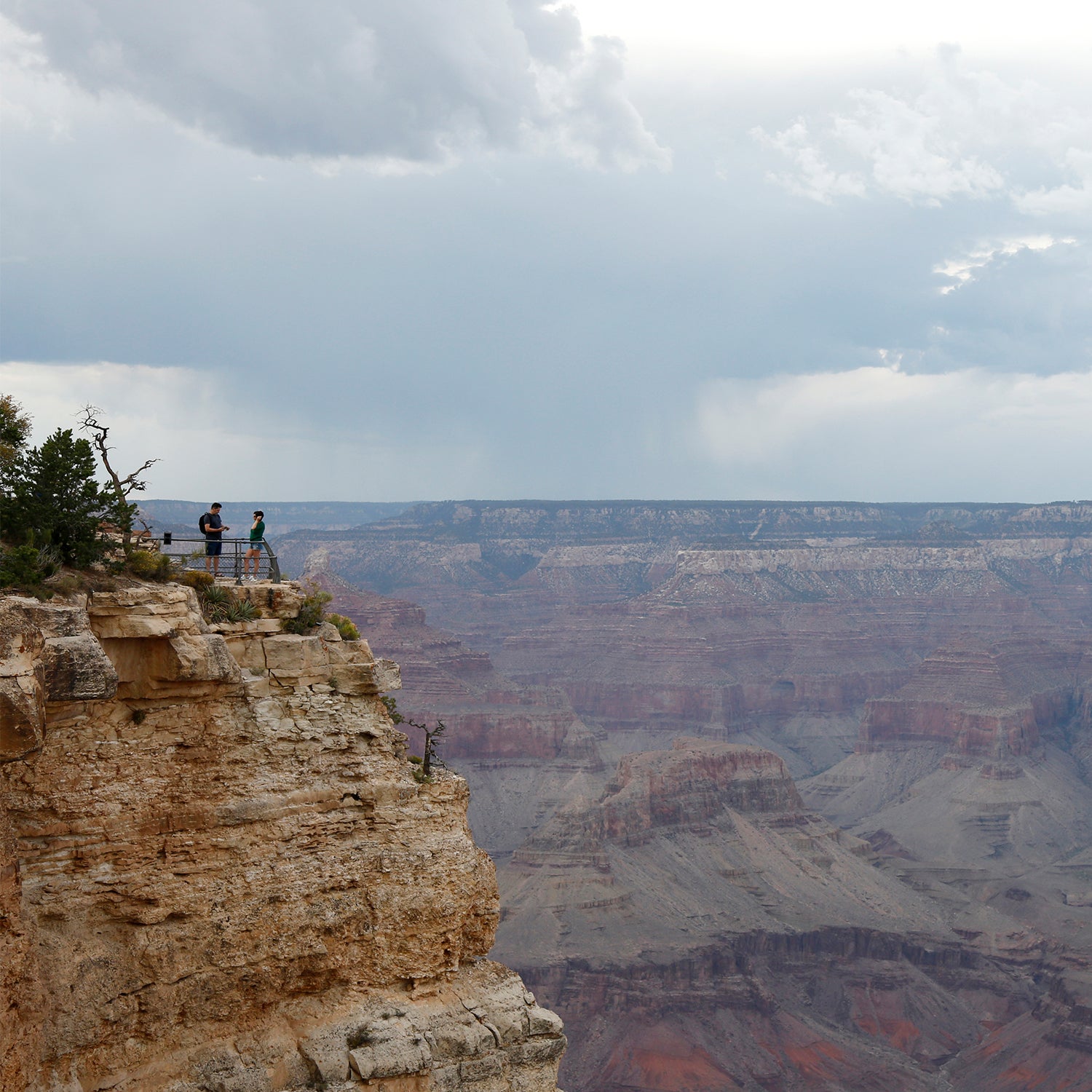When Justin Guthrie, 43, of Saint Anne, Missouri, died while illegally BASE jumping in Grand Canyon National Park earlier in August, one of the nation’s preeminent BASE instructors bristled at calling it a BASE jump.
According to┬а, rangers found GuthrieтАЩs body and a deployed parachute 500 feet below the south rim of the canyon. Guthrie had apparently jumped from Yavapai Point, an overlook popular with tourists for its stunning views.
Tom Aiello, a leading BASE instructor, says Yavapai Point is not an тАЬexit point.тАЭ Exit points are jump sites that are widely accepted by the international BASE (an acronym which stands for the features that participants jump from the most: Bridges, antennae, spans, and earth) community as safe, from a technical perspective. тАЬItтАЩs too short, the cliff is underhung, thereтАЩs no landing area, or a very, very bad landing area,” Aiello says. “And doing it in the middle of summer when itтАЩs hot indicates turbulence from thermal air.” In other words, an experienced BASE jumper would not have thought to jump off Yavapai Point.
Aiello is the owner and founder of┬а in Twin Falls, Idaho, the home of Perrine Bridge, a popular destination┬аfor introductory training. He oversees a staff of instructors and has been teaching the sport for 20 years.
The general consensus among the BASE jumping community is that practitioners should begin with skydiving to develop both freefall and canopy skills. There is no BASE licensing system, but most instructors and equipment retailers will want proof of canopy skills before teaching you or selling you gear. According to , the recommendation is to get a skydiving license and jump 150-200 times before your first BASE jump. USPA (skydivingтАЩs governing body) maintains an of everyone who has completed the pre-requisite training. Justin GuthrieтАЩs name is not on the list.
But in a sport with such a renegade history, it’s unsurprising that some practitioners will flout the recommendations and take a leap of faith. Aiello says people attempting first-time BASE jumps DIY-style are, unfortunately, on the rise. He told┬а╣·▓·│╘╣╧║┌┴╧ that there have been a number of recent cases in which “somebody who was able to access gear but didn’t know anything about BASE jumping went out and tried to jump off and object and either critically injured or killed themselves.”
Last year in Yosemite National Park, a 17-year-old with no experience packed a rig (the term for the BASE canopy system), took a running start, and leapt off of El Capitan. The young manтАЩs GoPro helmet cam captured the experience, which he posted to Reddit. The has since been deleted, but the comment threadтАФincluding harsh criticism from the BASE communityтАФremains.
In it, the 17-year-old detailed that he lied about his skydiving and BASE experience to the person who sold him his rigтАФand that his parents had no clue what he was doing. Though the video has been deleted, users describe the jumper getting his canopy lines tangled and firing his brakes early, which could have led to him spiraling uncontrollably. A video showed him getting his canopy back under control a few hundred feet above the valley floor. тАЬEssentially he had followed some videos on the Internet trying to figure out how to do it,тАЭ Aiello says. тАЬHe did so many things wrong, it was shocking that he didnтАЩt die.тАЭ
A BASE jump from the Grand Canyon requires at least intermediate-level skills. After learning to skydive, a new BASE jumper would start with a tall bridgeтАФlike 486-foot Perrine Bridge in AielloтАЩs hometown or 410-foot Limska Draga in CroatiaтАФwhere thereтАЩs no rock face to contend with, just open air. Their first Earth┬аjump would be from a place like┬аBecco dell’Aquila, the тАЬEagleтАЩs BeakтАЭ exit point, located on a massively overhung wall of Monte Brento in Italy. By the time they stood on the lip of the Grand Canyon, a more challenging тАЬbig wallтАЭ due to being a shorter jump with a more vertical face, they would have completed┬аhundreds of successful BASE jumps.
BASE jumping is technically illegal in National Parks without a permit. But Aiello says legality is not the first consideration for determining an exit point. тАЬWe look at whether itтАЩs possibleтАФphysically possibleтАФto make a jump and to successfully deploy a parachute from this point.тАЭ
He says that there is a long history of BASE jumping into the Grand Canyon, both inside and outside the National Park boundary, and that the canyon walls contain multiple well-established exit points. , a big-wall climber who served in the 82nd Airborne Division of the U.S. Military, was one of the pioneers of BASE jumping in the Grand Canyon in the 1980s. Bowlin died there in 1993, when his canopy released prematurely and became entangled with another jumperтАЩs after launching off a rock protrusion known as тАЬThe NoseтАЭ on the east side of the canyon.
Miles Daisher, a BASE jump stuntman and member of Red BullтАЩs┬а┬аwith more than 10,000 skydives and over 6,000 BASE jumps under his beltтАФperhaps best known for working as Tom CruiseтАЩs BASE instructor in┬аMission Impossible: Dead ReckoningтАФhas been featured in multiple clips of BASE jumps into the Grand Canyon. One of them, the 2017 YouTube short┬а┬аcalls the Grand Canyon тАЬa dream destination for base jumpers.тАЭ
For Justin Guthrie, it was a nightmare. The National Park Service is still investigating the incident, and therefore not able to comment on GuthrieтАЩs gear or BASE experience. Aiello hopes that publicizing the death wonтАЩt draw inexperienced BASE jumpers to the Grand Canyon, but instead serve as a wake-up call that BASE is not a do-it-yourself sportтАФincreased availability of gear and online instructional material notwithstanding. тАЬIf you canтАЩt climb 5.14, trying to free-solo a 5.14 will not kill you because youтАЩre not even going to get off the ground,тАЭ Aiello says. тАЬBut the equivalent in BASE jumping will.тАЭ


